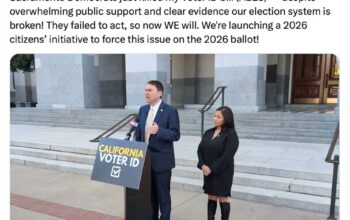The drug cartels are bringing drugs into our nation due to the climate “crisis. Humans sex traffickers is NOT for the purpose of prostitution of young girls, it is because of the climate. Rapists and murderers prefer doing their crimes in the United States because e you drive a car and breathe, causing changes in the climate. The nut cases like Gore, the high school drop out Greta and the flaky Kamala Harris want our borders open to stop global warning. Has anyone checked their mental capacity? Seems like Biden, with his dementia is brighter than they are—at least he does not know what he is doing.
- “But a factor now — and even more so in the future — is the push of extreme weather and climate change, which will disproportionately affect the people living in the poorer, hot countries that are already a major source of migrants to the U.S.
- That means the U.S., as well as the rich nations of Europe and even countries like India, will likely face a permanent and likely growing flow of climate migrants that they and the international refugee system more broadly are ill-equipped to handle.
By the numbers: The World Bank estimates that three regions — Latin America, sub-Saharan Africa and Southeast Asia — will generate 143 million more climate migrants by 2050.
The catch: Most people displaced because of the effect of weather and climate first migrate not internationally, but to towns and cities in their own countries.”
Yup, terrorists are coming into the U.S. because of climate problems in their nation. Seriously, these folks need to be asked “what is the punchline” and then laughed at—before they get psychiatric help.
| The border crisis is intensified by the climate crisis |
| Axios, 3/27/21 |
| The influx of migrants to the U.S. southern border has taken over the news — and climate change, among other factors, ensures it won’t be going away. Why it matters: The migration of tens of millions of people, exacerbated by a changing climate, will be one of the mega-trends of the 21st century. For both humanitarian and political reasons, wealthy countries like the U.S. will need to figure out a way to handle a flow of people that may never stop. Driving the news: During President Biden’s first presidential press conference Thursday, questions about the renewed flow of migrants — including unaccompanied minors — dominated the discussion. As my Axios colleague Stef Kight has reported, the administration “is struggling to keep up with a migration surge” as it tries to balance humanitarian and COVID-19 concerns with border security. The big picture: People make the difficult decision to leave their homes for many reasons, including conflict and crime, political persecution, and the simple desire for a better life. But a factor now — and even more so in the future — is the push of extreme weather and climate change, which will disproportionately affect the people living in the poorer, hot countries that are already a major source of migrants to the U.S. That means the U.S., as well as the rich nations of Europe and even countries like India, will likely face a permanent and likely growing flow of climate migrants that they and the international refugee system more broadly are ill-equipped to handle. By the numbers: The World Bank estimates that three regions — Latin America, sub-Saharan Africa and Southeast Asia — will generate 143 million more climate migrants by 2050. The catch: Most people displaced because of the effect of weather and climate first migrate not internationally, but to towns and cities in their own countries. But as Abrahm Lustgarten reported in a sweeping story for the New York Times and ProPublica last year, as migrants crowd ill-equipped urban areas, they “stretch infrastructure, resources and services to their limits,” which becomes both a source of misery and push for international migration. A model produced for the piece projected that migration from Central America will rise every year regardless of climate change, but that in the most extreme warming scenarios, more than 30 million migrants would head toward the U.S. border over the next 30 years. Be smart: Climate change’s precise role in migration is tangled up with more immediate factors, like security and economic well-being. But we know millions of people will want to migrate to the U.S. in the future — and that many of them will try to come regardless of border policies. A survey released this week by Gallup found more than a quarter of the population of Latin America and the Caribbean — 120 million people — say they would like to permanently move to another country. 42 million of them say they want to move to the U.S. Yes, but: Immigration is among the most politically divisive issues in the U.S., one that has repeatedly foiled efforts of presidents from both parties to find a solution. The bottom line: “Here are questions every leader should be able to answer regardless of their politics,” Gallup chairman and CEO Jim Clifton wrote this week. “How many more people are coming to the southern border? And what is the plan?” The answers: Almost certainly many more. And we don’t know. |



